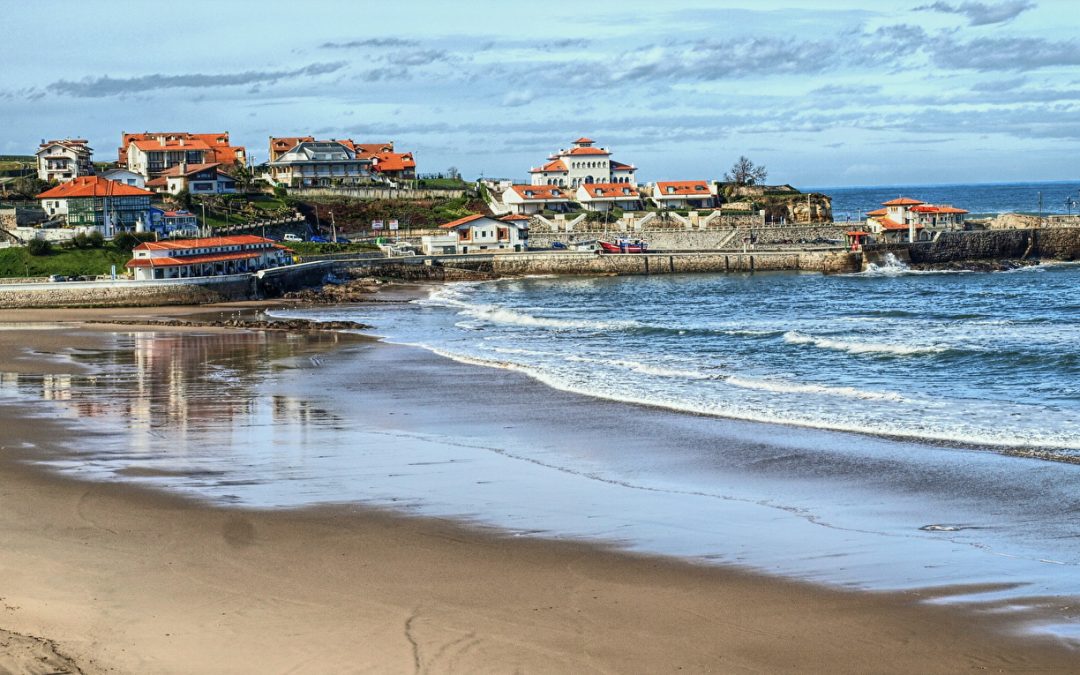
THE MOST ATTRACTIVE VILLAGES IN CANTABRIA
THE MOST ATTRACTIVE VILLAGES IN CANTABRIA
Just some of the most Attractive Villages in Cantabria which you should really get to know!
- SANTILLANA DEL MAR
In the summer months especially, this lovely unspoilt village with its cobbled streets and stone- built houses is a popular tourist attraction for people from all around the world. Visitors come to admire the Colegiata de Santa Juliana, to stay in one of the charming hotels or to sample just some of the delicious Cantabrian cuisine. Considered to be one of the most beautiful villages in Spain, it really is a must for foreign and Spanish visitors alike!
Nearby are the world-famous caves of ALTAMIRA where you can visit the very worthwhile museum and go into a replica of the caves. You mustn’t miss the opportunity to see some of the best examples of prehistoric paintings in the world!
- CASTRO URDIALES
One of the Roman port settlements to be found along the coast of Cantabria, Castro Urdiales is a town you shouldn’t miss either! With its prominent castle and church set against the deep blue of the Cantabrian Sea, the long sea-front promenade, innumerable hotels, restaurants and typical bars with some of the best examples of Spanish pinchos and wines! Well, you will never regret coming!
- BARCENA MAYOR
A tiny inland village, now almost completely restored, this countryside community nestles among the green slopes of the mountains of Cantabria. Coming here, you will feel you have left behind the hustle and bustle of the 21st Century and returned to medieval life! You will not fail to be charmed by the stone houses, the river and the riverside restaurants where you can sample some of the typical local dishes, including ‘cocido montañes’ and ‘lechazo’! Try it for yourselves, and you will be as charmed as I was!
- POTES
Getting to Potes, set in its own hidden valley in los ‘Picos de Europa’ and with its own micro-climate, is quite an adventure in itself! Driving along the long, twisty, narrow gorge and following the rushing waters of the river between the high mountain crags, you will feel you are moving into another secret world, set apart from the rest of Cantabria! Visit ‘El Monasterio de Santo Toribio’, go up into Los Picos by cable car at Fuente Dé, and take a long walk into the breathtakingly beautiful mountains. Potes, with its majestic surroundings, and its renowned food and drink has to be high on your list of places in Cantabria to visit!
- COMILLAS
Having left the motorway and driving in the direction Comillas through rolling hills, you very soon see this most picturesque coastal town lying before you with its vast backdrop of the Cantabrian Sea. This is a splendid view to surprise you, and draw you down into the town, its stone houses, narrow cobbled streets, numerous bars and restaurants, all enticing you to try out the local cuisine. Wander around and discover examples of Indiana houses, a most unusual house built by Gaudi, La Universidad Pontificia de Comillas and El Palacio de Sobrellano. Then on down to the charming port area and the beach where you can relax and enjoy a sunny afternoon! Here there is variety for all the family!
- SAN VICENTE DE LA BARQUERA
Along the coast westwards from Comillas is the totally charming fishing port of San Vicente with its wide awe-inspiring estuary spanned by a long arched stone bridge. Wander along the waterfront, have a drink in one of the many street cafés or bars, and taste some of the wide variety of fish dishes in the innumerable restaurants. Climb up through the old port to the castle built over Roman foundations and browse round the church of Santa Maria de los Angeles. From the port drive along the coast road to the long, sandy and unspoilt beaches of Oyambre and Meró and look back at the town with the mountains behind.
- LAREDO
With one of the longest open and sandy beaches along the coast of Cantabria, Laredo attracts many tourists in the Summer months. Roughly half way between Bilbao and Santander, a stay here enables you to visit both cities and enjoy the culture that they both have to offer you. Relax in this quiet town, stroll along the sea front, enjoy good food and drink and benefit from its proximity to other towns and villages of great interest.
- LIERGANES
This small inland spa town surrounded by mountains attracts tourists all year round, who come for treatments in the spa hotel or simply to spend a quiet and relaxing holiday away from the rush and tumble of modern life. Lying astride the river Miera, this pretty picture-postcard town with its superb examples of local stone architecture, flower filled balconies and cobbled streets, well deserves its award as one of the prettiest towns in the whole of Cantabria. Learn about the legend of ‘El Hombre Pez’ and the history of cannon making, try the renowned ‘chocolate con churros’ or simply soak up the peace and quietness of this unique Cantabrian jewel! A day spent here is so very worthwhile, and a drive out of the town and along the narrow tree-lined winding roads into the surrounding mountains is also to be highly recommended.














Recent Comments